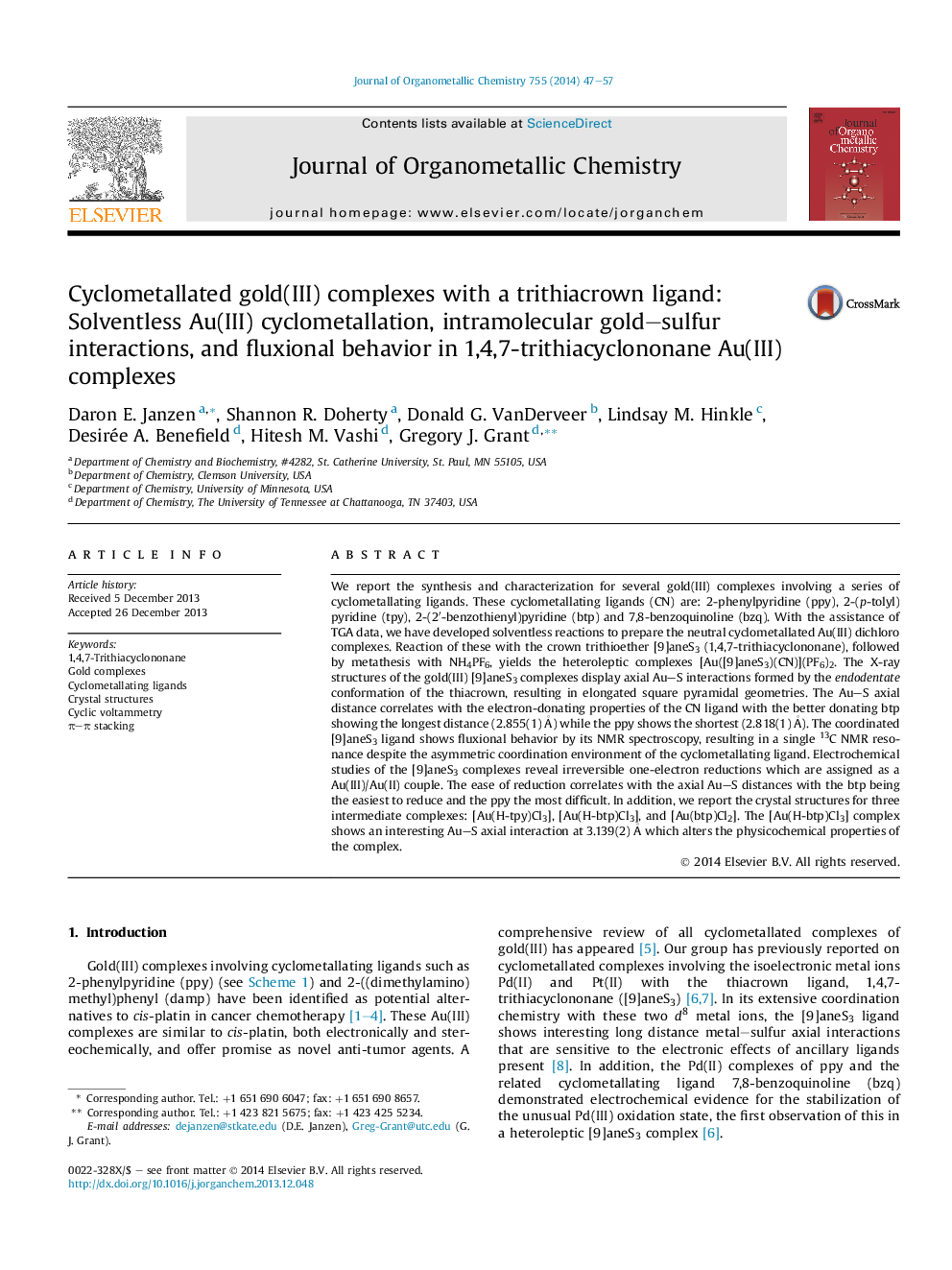| کد مقاله | کد نشریه | سال انتشار | مقاله انگلیسی | نسخه تمام متن |
|---|---|---|---|---|
| 1324132 | 1499885 | 2014 | 11 صفحه PDF | دانلود رایگان |

• Au(III) cyclometallated complexes can be prepared using a solventless synthesis.
• These complexes react with [9]aneS3 to form elongated square pyramidal structures.
• The Au–S axial distance is sensitive to the identity of the cyclometallating ligand.
• Two Au–S axial interactions are required to facilitate the Au(III)/Au(II) reduction.
• Among the cyclometallating ligands, the increasing donor ability is: ppy < tpy < btp.
We report the synthesis and characterization for several gold(III) complexes involving a series of cyclometallating ligands. These cyclometallating ligands (CˆN) are: 2-phenylpyridine (ppy), 2-(p-tolyl)pyridine (tpy), 2-(2′-benzothienyl)pyridine (btp) and 7,8-benzoquinoline (bzq). With the assistance of TGA data, we have developed solventless reactions to prepare the neutral cyclometallated Au(III) dichloro complexes. Reaction of these with the crown trithioether [9]aneS3 (1,4,7-trithiacyclononane), followed by metathesis with NH4PF6, yields the heteroleptic complexes [Au([9]aneS3)(CˆN)](PF6)2. The X-ray structures of the gold(III) [9]aneS3 complexes display axial Au–S interactions formed by the endodentate conformation of the thiacrown, resulting in elongated square pyramidal geometries. The Au–S axial distance correlates with the electron-donating properties of the CˆN ligand with the better donating btp showing the longest distance (2.855(1) Å) while the ppy shows the shortest (2.818(1) Å). The coordinated [9]aneS3 ligand shows fluxional behavior by its NMR spectroscopy, resulting in a single 13C NMR resonance despite the asymmetric coordination environment of the cyclometallating ligand. Electrochemical studies of the [9]aneS3 complexes reveal irreversible one-electron reductions which are assigned as a Au(III)/Au(II) couple. The ease of reduction correlates with the axial Au–S distances with the btp being the easiest to reduce and the ppy the most difficult. In addition, we report the crystal structures for three intermediate complexes: [Au(H-tpy)Cl3], [Au(H-btp)Cl3], and [Au(btp)Cl2]. The [Au(H-btp)Cl3] complex shows an interesting Au–S axial interaction at 3.139(2) Å which alters the physicochemical properties of the complex.
Cyclometallated gold(III) complexes with the thiacrown 1,4,7-trithiacyclononane form elongated square pyramidal structures with two equatorial Au–S bonds and one long distance Au–S interaction.Figure optionsDownload as PowerPoint slide
Journal: Journal of Organometallic Chemistry - Volume 755, 1 April 2014, Pages 47–57